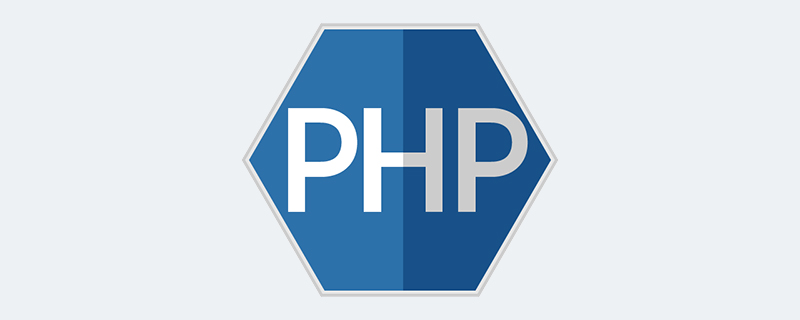This article mainly introduces the steps of configuring Nginx PHP in detail, and understands the simple tutorial of Nginx PHP configuration. Interested friends can refer to it
For many people, configuring Nginx PHP It's nothing more than searching for a tutorial and then copying and pasting it. It sounds like there is nothing wrong with it, but in fact, a lot of information on the Internet is in disrepair and full of loopholes. If you just copy and paste without asking for a deeper understanding, you will pay the price sooner or later.

Suppose we use PHP to implement a front-end controller, or to put it bluntly, it is a unified entrance: send all PHP requests to the same file, and then in this file Routing is implemented by parsing "REQUEST_URI".
Generally configure it like this
At this time many tutorials will teach you to configure Nginx PHP like this:
##
server {
listen 80;
server_name foo.com;
root /path;
location / {
index index.html index.htm index.php;
if (!-e $request_filename) {
rewrite . /index.php last;
}
}
location ~ /.php$ {
include fastcgi_params;
fastcgi_param SCRIPT_FILENAME /path$fastcgi_script_name;
fastcgi_pass 127.0.0.1:9000;
fastcgi_index index.php;
}
}
There are a lot of mistakes here, or at least bad tastes. Let’s take a look and you can find a few. We need to first understand the inheritance relationship of the instructions in the Nginx configuration file:
The Nginx configuration file is divided into many blocks. The common ones from outside to inside are "http", "server", "location", etc. , the default inheritance relationship is from outside to inside, which means that the inner block will automatically obtain the value of the outer block as the default value.
Let's start with the "index" directive In the problem configuration it is defined in "location":
location / {
index index.html index.htm index.php;
}
Once a new "location" needs to be added in the future, there will inevitably be repeatedly defined "index" instructions. This is because multiple "locations" are in a horizontal relationship and do not There is inheritance. At this time, "index" should be defined in "server". With the inheritance relationship, the "index" command can take effect in all "locations". Let’s take a look at the “if” command It is no exaggeration to say that it is the most misunderstood Nginx command:
if (!-e $request_filename) {
rewrite . /index.php last;
}
Many people like to use the "if" instruction to do a series of checks, but this is actually the responsibility of the "try_files" instruction:
try_files $uri $uri/ /index.php;
In addition, beginners often think that the "if" instruction is a kernel-level instruction, but in fact it is part of the rewrite module, and the Nginx configuration is actually declarative. , not procedural, so when it is mixed with instructions from non-rewrite modules, the results may not be what you want.
Let’s take a look at the "fastcgi_params" configuration file
include fastcgi_params;
Nginx has two fastcgi configuration files, namely "fastcgi_params" " and "fastcgi.conf", there is not much difference between them. The only difference is that the latter has one more line of definition of "SCRIPT_FILENAME" than the former:
fastcgi_param SCRIPT_FILENAME $document_root$fastcgi_script_name;
Note: There is no / between $document_root and $fastcgi_script_name. Originally, Nginx only had "fastcgi_params". Later, it was discovered that many people used hard-coding when defining "SCRIPT_FILENAME", so "fastcgi.conf" was introduced to standardize usage.
But this raises a question: Why must we introduce a new configuration file instead of modifying the old configuration file? This is because the "fastcgi_param" instruction is an array type. The same as the ordinary instruction: the inner layer replaces the outer layer. The difference from the ordinary instruction is that when used multiple times at the same level, it is added instead of replaced. In other words, if "SCRIPT_FILENAME" is defined twice at the same level, they will both be sent to the backend, which may cause some potential problems. In order to avoid such situations, a new configuration file was introduced.
In addition, we also need to consider a security issue: when PHP turns on "cgi.fix_pathinfo", PHP may parse the wrong file type as a PHP file. If Nginx and PHP are installed on the same server, the simplest solution is to use the "try_files" command to filter:
try_files $uri =404;
Improved version Based on the previous analysis, here is an improved version. Is it much cleaner than the original version?
server {
listen 80;
server_name foo.com;
root /path;
index index.html index.htm index.php;
location / {
try_files $uri $uri/ /index.php$is_args$args;
}
location ~ /.php$ {
try_files $uri =404;
include fastcgi.conf;
fastcgi_pass 127.0.0.1:9000;
}
}
Related Recommended: ##
The above is the detailed content of How to configure Nginx + PHP correctly. For more information, please follow other related articles on the PHP Chinese website!
 内存飙升!记一次nginx拦截爬虫Mar 30, 2023 pm 04:35 PM
内存飙升!记一次nginx拦截爬虫Mar 30, 2023 pm 04:35 PM本篇文章给大家带来了关于nginx的相关知识,其中主要介绍了nginx拦截爬虫相关的,感兴趣的朋友下面一起来看一下吧,希望对大家有帮助。
 nginx限流模块源码分析May 11, 2023 pm 06:16 PM
nginx限流模块源码分析May 11, 2023 pm 06:16 PM高并发系统有三把利器:缓存、降级和限流;限流的目的是通过对并发访问/请求进行限速来保护系统,一旦达到限制速率则可以拒绝服务(定向到错误页)、排队等待(秒杀)、降级(返回兜底数据或默认数据);高并发系统常见的限流有:限制总并发数(数据库连接池)、限制瞬时并发数(如nginx的limit_conn模块,用来限制瞬时并发连接数)、限制时间窗口内的平均速率(nginx的limit_req模块,用来限制每秒的平均速率);另外还可以根据网络连接数、网络流量、cpu或内存负载等来限流。1.限流算法最简单粗暴的
 nginx+rsync+inotify怎么配置实现负载均衡May 11, 2023 pm 03:37 PM
nginx+rsync+inotify怎么配置实现负载均衡May 11, 2023 pm 03:37 PM实验环境前端nginx:ip192.168.6.242,对后端的wordpress网站做反向代理实现复杂均衡后端nginx:ip192.168.6.36,192.168.6.205都部署wordpress,并使用相同的数据库1、在后端的两个wordpress上配置rsync+inotify,两服务器都开启rsync服务,并且通过inotify分别向对方同步数据下面配置192.168.6.205这台服务器vim/etc/rsyncd.confuid=nginxgid=nginxport=873ho
 nginx php403错误怎么解决Nov 23, 2022 am 09:59 AM
nginx php403错误怎么解决Nov 23, 2022 am 09:59 AMnginx php403错误的解决办法:1、修改文件权限或开启selinux;2、修改php-fpm.conf,加入需要的文件扩展名;3、修改php.ini内容为“cgi.fix_pathinfo = 0”;4、重启php-fpm即可。
 如何解决跨域?常见解决方案浅析Apr 25, 2023 pm 07:57 PM
如何解决跨域?常见解决方案浅析Apr 25, 2023 pm 07:57 PM跨域是开发中经常会遇到的一个场景,也是面试中经常会讨论的一个问题。掌握常见的跨域解决方案及其背后的原理,不仅可以提高我们的开发效率,还能在面试中表现的更加
 nginx部署react刷新404怎么办Jan 03, 2023 pm 01:41 PM
nginx部署react刷新404怎么办Jan 03, 2023 pm 01:41 PMnginx部署react刷新404的解决办法:1、修改Nginx配置为“server {listen 80;server_name https://www.xxx.com;location / {root xxx;index index.html index.htm;...}”;2、刷新路由,按当前路径去nginx加载页面即可。
 nginx怎么禁止访问phpNov 22, 2022 am 09:52 AM
nginx怎么禁止访问phpNov 22, 2022 am 09:52 AMnginx禁止访问php的方法:1、配置nginx,禁止解析指定目录下的指定程序;2、将“location ~^/images/.*\.(php|php5|sh|pl|py)${deny all...}”语句放置在server标签内即可。
 Linux系统下如何为Nginx安装多版本PHPMay 11, 2023 pm 07:34 PM
Linux系统下如何为Nginx安装多版本PHPMay 11, 2023 pm 07:34 PMlinux版本:64位centos6.4nginx版本:nginx1.8.0php版本:php5.5.28&php5.4.44注意假如php5.5是主版本已经安装在/usr/local/php目录下,那么再安装其他版本的php再指定不同安装目录即可。安装php#wgethttp://cn2.php.net/get/php-5.4.44.tar.gz/from/this/mirror#tarzxvfphp-5.4.44.tar.gz#cdphp-5.4.44#./configure--pr


Hot AI Tools

Undresser.AI Undress
AI-powered app for creating realistic nude photos

AI Clothes Remover
Online AI tool for removing clothes from photos.

Undress AI Tool
Undress images for free

Clothoff.io
AI clothes remover

AI Hentai Generator
Generate AI Hentai for free.

Hot Article

Hot Tools

SublimeText3 Mac version
God-level code editing software (SublimeText3)

SAP NetWeaver Server Adapter for Eclipse
Integrate Eclipse with SAP NetWeaver application server.

Atom editor mac version download
The most popular open source editor

mPDF
mPDF is a PHP library that can generate PDF files from UTF-8 encoded HTML. The original author, Ian Back, wrote mPDF to output PDF files "on the fly" from his website and handle different languages. It is slower than original scripts like HTML2FPDF and produces larger files when using Unicode fonts, but supports CSS styles etc. and has a lot of enhancements. Supports almost all languages, including RTL (Arabic and Hebrew) and CJK (Chinese, Japanese and Korean). Supports nested block-level elements (such as P, DIV),

SecLists
SecLists is the ultimate security tester's companion. It is a collection of various types of lists that are frequently used during security assessments, all in one place. SecLists helps make security testing more efficient and productive by conveniently providing all the lists a security tester might need. List types include usernames, passwords, URLs, fuzzing payloads, sensitive data patterns, web shells, and more. The tester can simply pull this repository onto a new test machine and he will have access to every type of list he needs.






